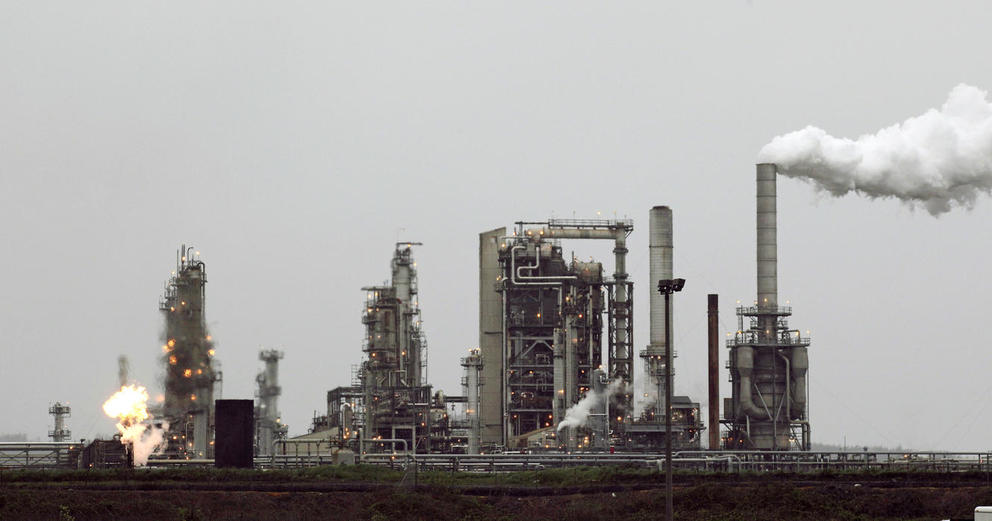Five petroleum companies were among the 56 eligible bidders in the state’s first two carbon auctions, where the price reached $48.50 per allowance in February and $56.01 in May. Between the two auctions, Washington sold more than 17 million allowances, with one allowance equaling roughly one metric ton of carbon. The auctions have raised almost $300 million for fiscal 2024, which began July 1, and $557 million for fiscal 2025, which still has three more quarterly auctions to come.
Although utilities and petroleum companies are invoiced for the allowances they buy, the Washington residents buying that electricity and filling their SUVs with gas are paying the bill.
Todd Myers, environmental director for the conservative Seattle think tank Washington Policy Center, acknowledged that many factors go into fluctuating gasoline prices. “The question is why Washington is the most expensive in the United States? Why are Washington’s prices going up faster than everyone else?” he said. The X factor is that Washington and California are the only states with full-fledged cap-and-trade programs, with Washington’s auction prices higher than California’s, he added.
Myers noted that a gallon of gasoline produces 1/100th of a metric ton of pollution. With auction prices hovering around $50 per metric ton, the math translates to a 50-cent increase per gallon if all the costs are passed on to drivers, he said.
Yoram Bauman, a liberal economist from Salt Lake City, Utah – which in 2016 tried and failed to pass Initiative 732 to establish a different cap-and-trade program coupled with a 1 percent drop in the state’s sales tax – agrees with Myers’ calculations.
Bauman said I-732’s supporters expected cap-and-trade costs to be passed on to customers at the pump. “The idea that the oil companies are gonna suck it up is not in the realm of possibility,” he said.
In an emailed statement Chevron confirms this, saying that higher gas prices are essentially a feature of the program.
“Washington’s most recent carbon cap-and-trade compliance costs raise gasoline prices by about 10 percent in the state,” said the statement emailed from Chevron spokesman Ross Allen. “The Washington program is designed to force rapid cuts to carbon intensity in a way that requires consumers to pay higher gasoline prices.”
The cap-and-invest program is designed to decrease carbon emissions in the state to meet 2035 and 2050 decarbonization goals. A 2021 Washington Department of Ecology report put the state’s carbon dioxide emissions at 99.57 million tons in 2018. A 2008 state law calls for overall emissions to be reduced to 50 million tons by 2030, to 27 million tons by 2040 and to 5 million tons by 2050.
Washington, Oregon, California and Hawaii also had most of the nation’s highest gasoline prices before Washington’s cap-and-invest program went into effect in January. According to the American Automobile Association, the breakdown in the highest prices for regular gasoline is:
• National average — July 11, 2023, $3.54 per gallon.
One month ago, $3.51 per gallon.
One year ago, $4.81 per gallon.
• Washington — July 11, 2023, $4.959 per gallon (first in nation).
One month ago, $4.806 per gallon (second in nation).
One year ago, $5.360 per gallon (sixth in nation).
• California — July 11, 2023, $4.882 per gallon (second).
One month ago, $4.899 per gallon (first).
One year ago, $6.088 per gallon (first).
• Oregon — July 11, 2023, $4.615 per gallon (fourth).
One month ago, $4.442 per gallon (fourth).
One year ago, $5.398 per gallon (fifth).
• Hawaii — July 11, 2023, $4.702 per gallon (third).
One month ago, $4.736 per gallon (third).
One year ago, $5.617 per gallon (sixth).
Gov. Jay Inslee’s office disputes linking higher gasoline prices entirely to carbon pricing, saying the analysis is more complicated.
“Gas prices fluctuate widely due to a variety of factors — geopolitical events have driven up the price of crude and [the American Automobile Association] has emphasized that maintenance work at our state’s refineries has been a significant factor for our region’s price increases,” wrote Inslee spokeswoman Jaime Smith in an email.
She notes that in May, prices rose more quickly in Oregon than in Washington, and that current prices in Washington are about 55 cents a gallon less than they were a year ago.
“While critics of our climate policy will try to pin any and all price increase on the [2021 Climate Change Act], they conveniently ignore that fossil fuel suppliers have always had some of their highest profit margins in the Northwest,” Smith added. “Recent numbers from the industry indicate their profit margin in Washington ranges between 60-80 cents per gallon.”
In January, Reuters wrote that the oil industry had posted record profits in 2022. In February, Seattle-based liberal think tank Climate Solutions wrote that oil corporations posted in the Seattle area their second-highest profit margin in the nation — $1.09 per gallon.
Another reason for Washington’s high carbon auction prices could be that some entities are buying the allowances to resell for higher prices in the future, said Claire Boyte-White, policy relations manager for the state’s carbon program. Myers said some financial institutions that don’t have emissions problems have been buying allowances in anticipation of reselling them for higher prices to emitting industries.
So what is Washington getting for its increased gasoline prices?
Since Washington’s new program is not just a cap-and-trade auction, but is also raising money to invest in carbon-reduction projects, the state is gaining more than higher gas prices. For fiscal 2024, which began July 1, the Legislature appropriated February’s revenue of $300 million into 188 individual allocations for solar panel farms, climate planning, pumped storage projects, developing a hydrogen industry, installing solar panels on buildings, constructing infrastructure for electric vehicles, developing hybrid fuel/electric ferries and other projects.
The Legislature’s 2024 session will focus on fiscal 2025, which will begin July 1, 2024. If auction sales continue at their present rate, the Legislature could be looking at more than $2 billion in cap-and-invest revenue for fiscal 2025.
Myers of the Washington Policy Center wants to see the new program changed before even higher gas prices arrive.
“There are many things that can be done. I don’t think the governor or the supporters want to do anything, however. The higher the price of the [carbon dioxide] allowances and the larger the impact on gas prices, the more money that goes into the state coffers,” Myers said, adding that the program also will help the governor and others meet another policy goal: pushing people into electric vehicles.
Smith in the governor’s office said that after just two auctions, it’s too soon to accurately assess the policy’s impact on gas prices. She also noted that the Washington program is designed to eventually link with Quebec’s and California’s markets, which would provide auction participants with access to a larger marketplace, trimming allowance prices.
Smith said the ecology department will hold an Allowance Price Containment Reserve, or APCR, auction on Aug. 9 to ensure more sustainable prices when market demand is high. If a quarterly auction price in 2023 exceeds $51.90, a follow-up auction will be held in which all bidders will end up with the same price, but not necessarily with all the allowances that they wanted to buy. The May 31 auction price of $56.01 per allowance triggered August’s APCR auction.
On July 5, State Sen. Chris Gildon, R-Puyallup, sent a letter to the state Ecology Department asking it to make some changes on its own prior to the next legislative session.
Gildon wants the Ecology Department to slow the program. He wants more allowances to be offered in the quarterly auctions to help prevent bidding wars and possibly reverse gas price increases.
He also asked the Ecology Department to give itself the power to temporarily suspend the cap-and-invest program when needed. He also wants to give farmers a break on high gasoline prices, and he wants no-cost allowances provided to state industries competing with foreign corporations that don’t have caps on their carbon emissions, such as their own oil refineries, from aerospace to wood products.
The Ecology Department is already meeting with agriculture stakeholders to come up with a formal proposal to help farmers by September. Toward the end of the 2023 legislative session, State Sens. Mark Mullet, D-Issaquah, and Joe Nguyen, D-White Center, introduced Senate Bill 5766 to award farmers a carbon rebate on their fuel costs. In the proposal, which is ready for the 2024 legislative session, for each gallon of fuel consumed on a farm or for transporting agricultural products, the user would be eligible for a remittance equal to the price of a ton of carbon at the most recent state emissions auction multiplied by 0.8 percent.
At the Feb. 28 auction, a ton of carbon went for $48.50. That would translate to a theoretical refund of 38.5 cents per gallon for that quarter.
“When we passed the [cap-and-trade law], we made a promise to Washington’s farmers to protect them from additional costs that could potentially be passed on from the bill. We need to keep that promise,” Mullet said in an April press release. “We hoped this was going to be addressed in implementation, but we heard clearly in budget hearings that this issue still needs to be addressed. This bill is a small, reasonable step that keeps our promise to our farmers.”
Meanwhile, foreign competition to Washington’s smokestack industries — one of Gildon’s concerns — has been on the state government’s radar for years. These industries competing with companies in other countries include petroleum refiners and manufacturers in the metals, paper, aerospace, wood products, chemicals, computer and electronics sectors, as well as food processors and cement producers.
In 2022, Rep. Joe Fitzgibbon, D-West Seattle, introduced House Bill 1682 to help these industries compete with foreign counterparts who did not have to deal with Washington’s stricter carbon emissions standards. The bill would have slowed how quickly they would be required to comply with the state’s increasing emissions standards. The proposal is still a work in progress, as industry representatives did not like Fitzgibbon’s approach.
Another suggestion from Myers of the Washington Policy Center would be to give oil companies the ability to buy more allowances. They are limited in the current system, leaving them at the mercy of speculators who buy credits to sell later at higher prices. He also called for measures to encourage lower final auction prices.
To Bauman, the co-leader of 2016’s failed I-732 efforts, that venture still holds a key for the current cap-and-trade program. I-732 would have been paired with a reduction in other other taxes, such as the sales tax, so that regular people paying higher gas taxes could get a break somewhere else.
Washington’s cap-and-invest program is still clearly a work in progress, just six months into its first year of implementation. Whether the current trends – of high allowance prices and higher gas prices – will continue is a question for some and a certainty for others.






